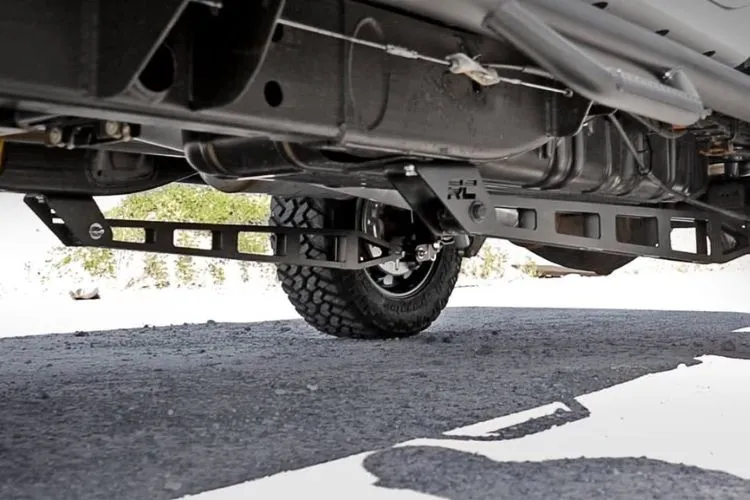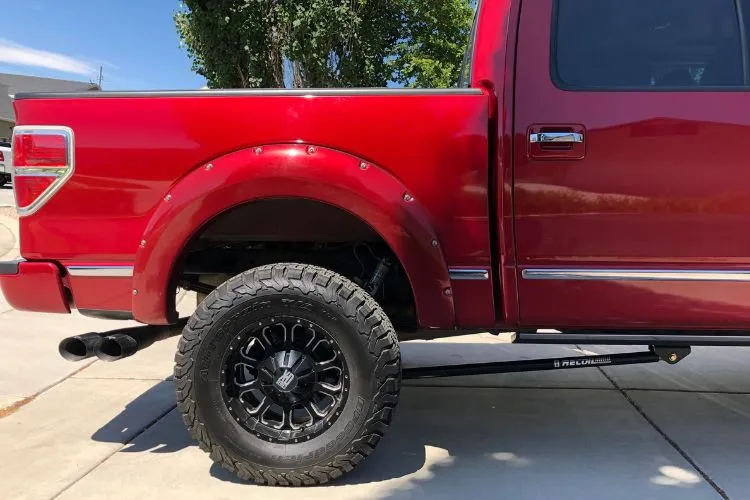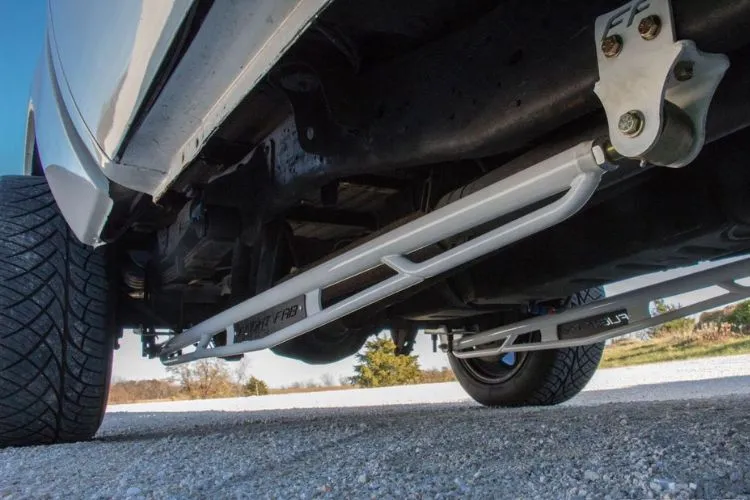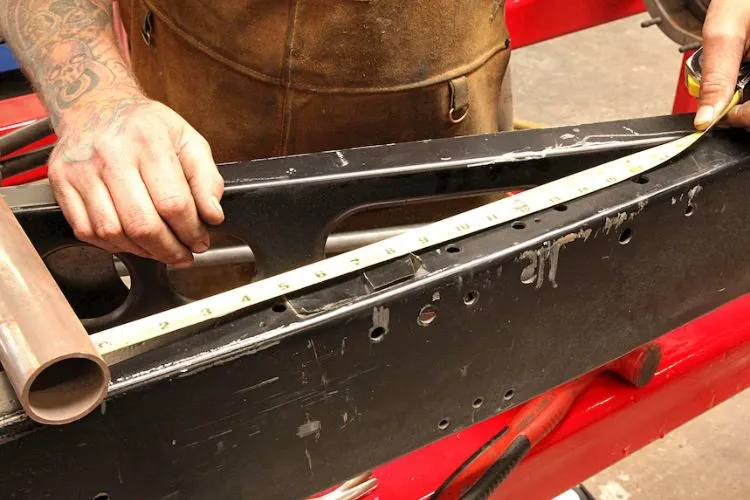When it comes to towing heavy loads, stability and control are of utmost importance. Ladder bars have gained popularity as an accessory that can enhance towing capabilities, promoting heightened levels of safety and performance. The question often arises, “Do ladder bars help with towing?”
We will delve into the benefits of ladder bars for towing, analyzing the various types available in the market. We will guide you through the installation process, provide essential maintenance tips, and address frequently asked questions.

Do Ladder Bars Help With Towing?
Yes, ladder bars can help with towing by providing enhanced stability, control, and improved towing capacity. They are designed to minimize axle wrap and wheel hop, which are common issues that can occur when towing heavy loads.
Axle wrap is the rotation and twisting of the rear axle due to the force generated while accelerating or decelerating a towed load. This can lead to a loss of traction and stability. Ladder bars counteract axle wrap by providing extra support and reducing axle movement, resulting in improved traction.
Wheel hop, on the other hand, occurs when the rear wheels bounce up and down during sudden acceleration or deceleration. Ladder bars help minimize wheel hop, thereby increasing stability and preventing accidents.
Additionally, ladder bars distribute the weight of the load more evenly, reducing swaying and fishtailing. This is especially beneficial when towing trailers or heavy equipment. The added stability and control offered by ladder bars can significantly enhance the towing experience.
Furthermore, ladder bars reduce strain on the suspension system, leading to improved towing capacity. They distribute the load more evenly, preventing excessive wear and tear on the vehicle.
Additionally, ladder bars improve braking efficiency by reducing the load transfer to the front wheels during braking, resulting in better stopping power and control.
In summary, ladder bars provide enhanced stability, control, and towing capacity by minimizing axle wrap, wheel hop, and weight distribution issues. They are a valuable accessory for safer and more controlled towing experiences.
Benefits of Ladder Bars in Towing

Enhanced Stability and Control
One of the primary advantages of using ladder bars for towing is the improved stability and control they provide. Ladder bars are designed to prevent axle wrap and wheel hop, two common issues that can occur when towing heavy loads.
Axle wrap happens when the force from accelerating or decelerating a towed load causes the rear axle to rotate and twist, leading to loss of traction and stability. Ladder bars help to counteract this by providing extra support and reducing axle movement, resulting in improved traction.
Similarly, wheel hop occurs when the rear wheels bounce up and down due to sudden acceleration or deceleration. Ladder bars help to minimize this hopping motion, thereby increasing stability and preventing potential accidents.
Additionally, ladder bars help distribute the weight of the load more evenly, reducing swaying and fishtailing. This is particularly beneficial when towing trailers or other heavy equipment. The added stability and control offered by ladder bars can significantly enhance the towing experience.
Improved Towing Capacity
Ladder bars can increase your vehicle’s towing capacity, allowing you to safely tow heavier loads. By reducing the strain on the suspension system, they help maintain stability and prevent excessive wear and tear on your vehicle.
When towing heavy loads, braking becomes crucial for ensuring safety on the road. Ladder bars improve braking efficiency by reducing the load transfer to the front wheels during braking, resulting in better stopping power and control.
Furthermore, ladder bars can enhance your vehicle’s overall towing performance. By providing additional support and stability, they reduce the chances of sway or loss of control, resulting in a smoother and more controlled towing experience.
Reduced Wear and Tear
Towing heavy loads without ladder bars can put immense stress on various components of your vehicle’s suspension system. The consistent strain can lead to premature wear and tear, decreasing the lifespan of critical parts such as tires, leaf springs, and shocks.
Ladder bars help alleviate this stress by distributing the load more evenly across the suspension system, reducing the strain on individual components. As a result, these parts are subjected to less stress, leading to increased longevity and reduced maintenance costs.
You may also find helpful: What are Ladder Grades?
Types of Ladder Bars
When considering ladder bars for towing, it is essential to understand the different types available in the market. The choice of ladder bars depends on factors such as vehicle type, towing needs, and personal preferences. Here are some common types:

- Rigid Ladder Bars: These are the most common type of ladder bars and provide the maximum stability and control. Rigid ladder bars connect the axle to the frame using solid bars, ensuring minimal movement and increased traction.
- Adjustable Ladder Bars: As the name suggests, adjustable ladder bars allow for fine-tuning of the suspension setup. They offer flexibility by enabling adjustments to the length of the bars, allowing users to find the perfect balance between stability and comfort.
- Traction Bars: Although not technically ladder bars, traction bars serve a similar purpose by reducing axle wrap and wheel hop during acceleration. They are commonly used in vehicles with leaf spring suspensions.
Installation and Maintenance
Installing ladder bars is a task that requires proper knowledge and expertise. It is recommended to have them installed by a professional unless you have experience working with suspension systems. Here’s a general overview of the installation process:

- Gather the required tools and equipment.
- Safely raise the rear of the vehicle and support it with jack stands.
- Remove the rear wheels to access the suspension components.
- Follow the manufacturer’s instructions to install the ladder bars, ensuring proper alignment and torque specifications.
- Reinstall the wheels and lower the vehicle.
- Perform a thorough inspection to ensure everything is securely installed.
To ensure optimal performance and longevity of ladder bars, regular maintenance is necessary. Here are some essential maintenance tips:
- Inspect the ladder bars regularly for signs of wear or damage.
- Check the mounting hardware for tightness.
- Lubricate any moving parts, such as bushings or joints, as recommended by the manufacturer.
- If any issues arise, such as noise or poor performance, consult a professional for further assessment and possible adjustments.
Frequently Asked Questions (FAQs)
Are ladder bars compatible with all vehicles?
Ladder bars are available for various vehicle types, but it is important to ensure compatibility before purchasing. Consult with the manufacturer or a professional to determine the appropriate ladder bars for your vehicle.
Will ladder bars affect my vehicle’s ride quality?
Ladder bars may offer a slightly stiffer ride due to their increased stability and control. However, modern ladder bars are designed to minimize any adverse effects on comfort, ensuring a balanced towing experience.
Are there any legal considerations when using ladder bars?
Check your local regulations regarding the usage of ladder bars or any modifications to suspension components. While ladder bars are generally legal, it is important to comply with local laws and ensure proper installation to maintain safety and legality.
Conclusion:
Ladder bars can greatly enhance your towing experience by providing increased stability, control, and improved towing capacity. Their ability to minimize axle wrap, wheel hop, and weight distribution issues play a vital role in maintaining safety while towing heavy loads.
By choosing the right ladder bars, following the installation guidelines, and performing regular maintenance, you can maximize the benefits and prolong the lifespan of both your vehicle and towing equipment. Consider ladder bars as a valuable investment for safer and more controlled towing experiences.


